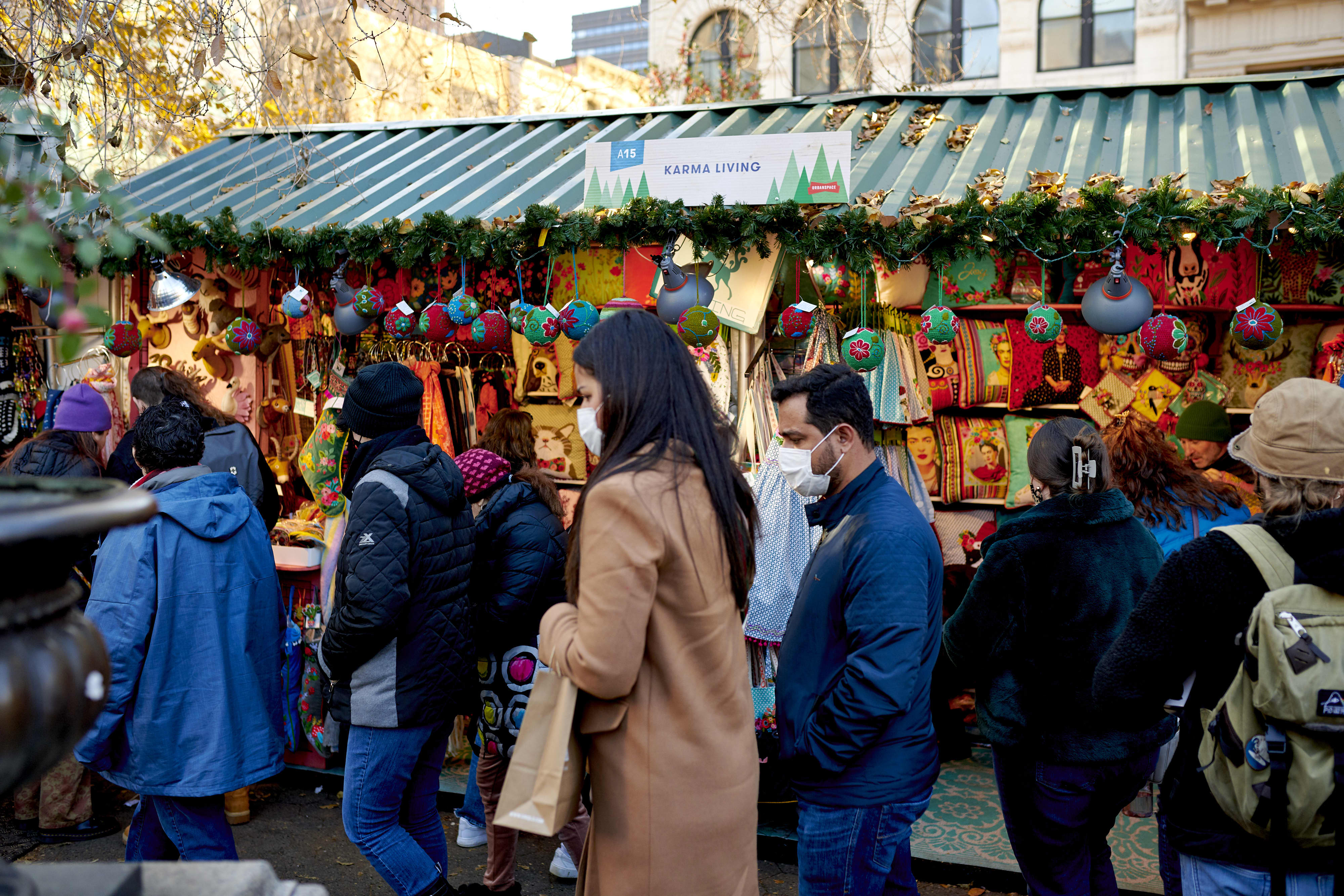
Shoppers walk through the Urbanspace Union Square Holiday Market in New York, U.S., on Sunday, Dec. 12, 2021.
Gabby Jones | Bloomberg | Getty Images
A lack of foreign tourists opening up their wallets and another wave of coronavirus cases in some major U.S. cities weighed on shopper turnout on the final Saturday before Christmas, preventing it from bouncing back to pre-pandemic levels.
Visits to retail stores dropped 26.3% on Saturday compared with the Saturday before Christmas in 2019, according to preliminary data from Sensormatic Solutions, a division of Johnson Controls. Year over year, though, retail traffic rose 19.4%, Sensormatic said.
The day known as Super Saturday is anticipated to be the second-busiest shopping day of the holiday season, behind Black Friday, according to Sensormatic.
In some cities over the weekend, lines were wrapping around the block at Covid-19 testing sites. But consumers left their homes to shop for last-minute gifts, holiday decorations and ingredients to cook up homemade meals. Many braved the pandemic to head to the movies, too: “Spider-Man: No Way Home” had a blowout weekend haul.
“Americans have shown that they will not let this get in their way of sort of getting back to normal as fast as they can,” said Peter McCall, senior manager of retail consulting at Sensormatic. “Super Saturday is a good example of that.”
There were some signs that shoppers are being more cautious in how they shop. McCall said that since Black Friday weekend, open-air shopping centers and outlet malls have been increasingly preferred over enclosed venues among U.S. consumers.
“I can’t necessarily tell you that it’s omicron related, but we are seeing a preference that looked similar to what it looked like a year ago,” McCall said.
One expert said that visits to both enclosed shopping malls and outdoor outlet centers over the weekend were stronger in regions of the country that are typically less crowded of people. Craig Johnson, founder of retail consulting firm CGP, called shopping patterns on Super Saturday “a tale of three cities.”
In major metropolitan areas such as New York, Chicago and San Francisco, store traffic compared with 2019 was depressed due to a near absence of foreign tourists and heightened fears over the highly contagious omicron variant, Johnson aid.
The state of New York has now reported three consecutive days of record new Covid cases. On Sunday, New York City Mayor Bill De Blasio announced 5,731 new cases. By comparison, the city was averaging fewer than 1,000 cases daily in early November. The uptick has led to a number of Broadway shows being called off at the last minute, as cast members test positive, and some restaurants are temporarily closing down again.
But in smaller U.S. cities and more suburban areas, visits to shopping centers improved over the weekend — even amid inclement weather in some regions, Johnson said.
“For areas with rain on Saturday, the traditional indoor malls were jammed and online sales were robust,” he said. “And on Sunday, with the rain gone, the outlet malls were packed.”
Johnson noted, however, there were widespread out-of-stocks for some popular toys, women’s shoes, holiday decorations and Sony’s sought-after PlayStation 5 unit. The supply chain bottlenecks could have led some shoppers to go elsewhere in search of gifts, or head home empty-handed.
The National Retail Federation, a leading industry trade group, has projected that retail sales over the holiday season could increase by as much as 11.5% year over year, excluding spending at automobile dealers, gas stations and restaurants. That would notch a new record for growth.




